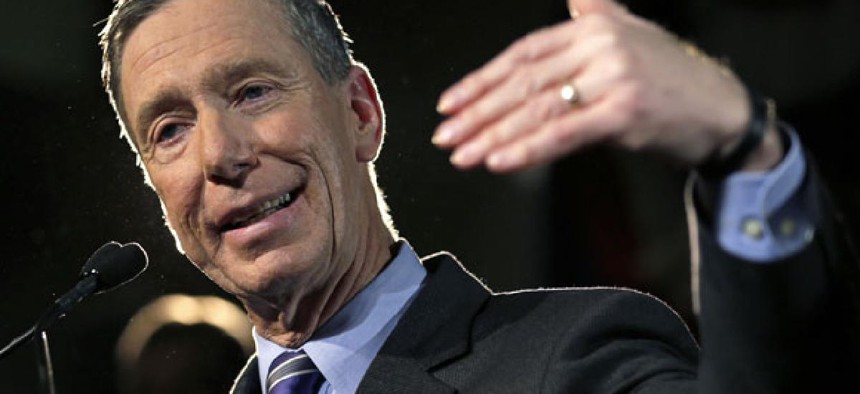
The bill would would provide “the best benefits at the best price,” Rep. Stephen Lynch, D-Mass., said. Charles Krupa/AP
Bill Aims to Cure Rising Prescription Drug Costs
House lawmaker says OPM should have stronger role in regulating costs.
This story has been updated.
Rep. Stephen Lynch, D-Mass., has proposed a bill to increase oversight and regulation of prescription drug costs for federal employee health beneficiaries.
The Federal Employees Health Benefits Program Prescription Drug Integrity, Transparency and Cost Savings Act (H.R. 1367) would provide “the best benefits at the best price,” Lynch said, by capping prescription drug prices paid by the FEHBP and providing stronger guidance for negotiators.
Currently, individual health plans contract with pharmacy benefit managers, who negotiate with drug manufacturers and pharmacies on behalf of their enrollees. Lynch said FEHBP participants are paying 15 percent to 45 percent more for their prescription drugs than participants in other federal programs, including the Veterans Affairs Department’s, and Medicare and Medicaid.
Lynch’s bill would create new disclosure and transparency requirements for the pharmacy benefit managers and force them to return 99 percent of all rebates, market share incentives and other monies received from pharmaceutical manufacturers for FEHBP business. It would also cap prices at the amount of the Average Manufacture Price and prohibit “drug switching” without prior physician approval.
Lynch, who is chairman of the House Oversight and Government Reform Subcommittee on the Federal Workforce, U.S. Postal Service and the Census, introduced a similar measure in 2010. That time around it cleared the subcommittee but not the full panel. At the time, the Office of Personnel Management agreed more must be done to rein in prescription drug costs, but said the bill was unnecessary.
OPM echoed that sentiment Friday, but acknowledged it still has work to do.
“By using its broad contracting authority, OPM has required that FEHB carriers negotiate transparency provisions in their subcontracts with pharmacy benefit managers,” OPM Associate Director of Healthcare and Insurance John O’Brien told Government Executive. “These provisions meet the intent of Representative Lynch’s bill. That said, we do recognize that further efforts are needed to improve cost and pricing transparency related to FEHBP prescription drug benefits. We are committed to ensuring that the FEHBP prescription drug benefit is cost-effective and transparent, and provides enrollees with comprehensive and quality coverage.”
O’Brien added OPM will continue to work with Congress to address the concerns raised in Lynch’s bill.
In a letter sent to FEHBP carriers Thursday to kick off negotiations for 2014 benefits and rates, OPM highlighted prescription drug costs as an area that should be addressed.
“Maximizing the effective use of medications and controlling pharmacy costs should be a central theme of 2014 benefit proposals,” OPM wrote.
Pharmacy claims account for about 30 percent of FEHBP premiums, according to OPM. This equates to more than $10 billion annually, Lynch said.
OPM set the goal of matching the industry growth rate of about 8 percent for pharmaceutical costs for 2014 by encouraging providers to increase the use of generic drugs, limit the use of expensive specialty drugs and find alternative options for illnesses besides prescription drugs.
Federal stakeholders, such as the American Federation of Government Employees and the National Treasury Employees Union, endorsed the legislation.
“This legislation would be a major step forward in bringing down health care costs for federal workers and retirees,” NTEU President Colleen M. Kelley said in a statement. “We applaud the continuing work of Rep. Lynch on this important matter. We welcome this bill and strongly support it.”
NEXT STORY: Thinking About Insurance, Part Two







